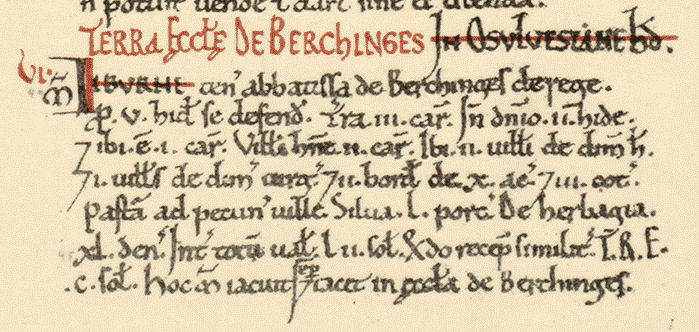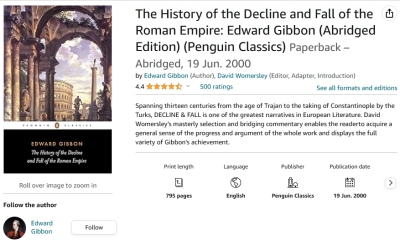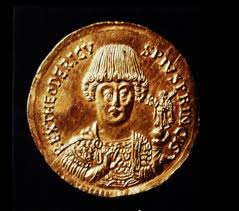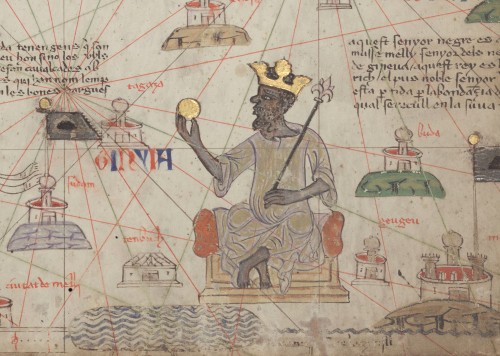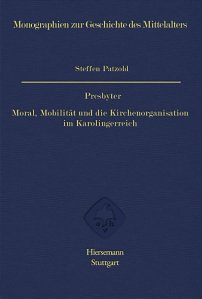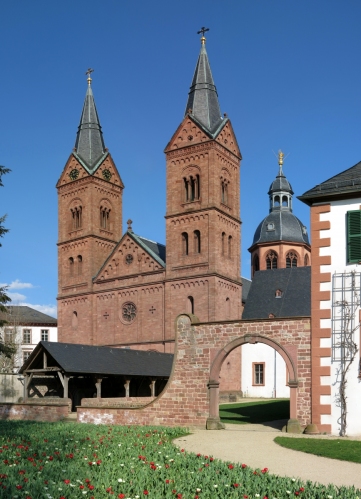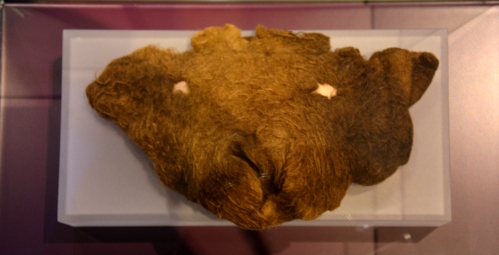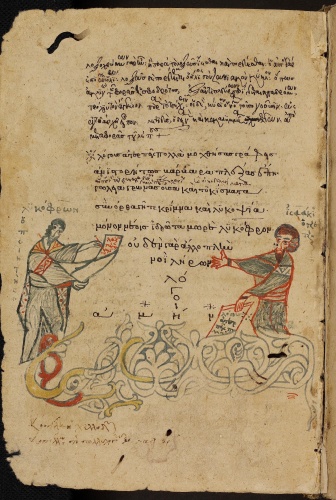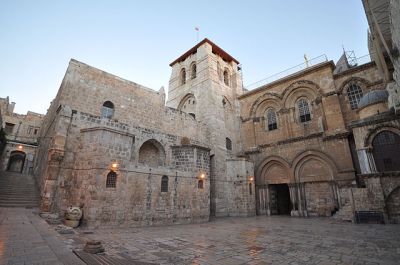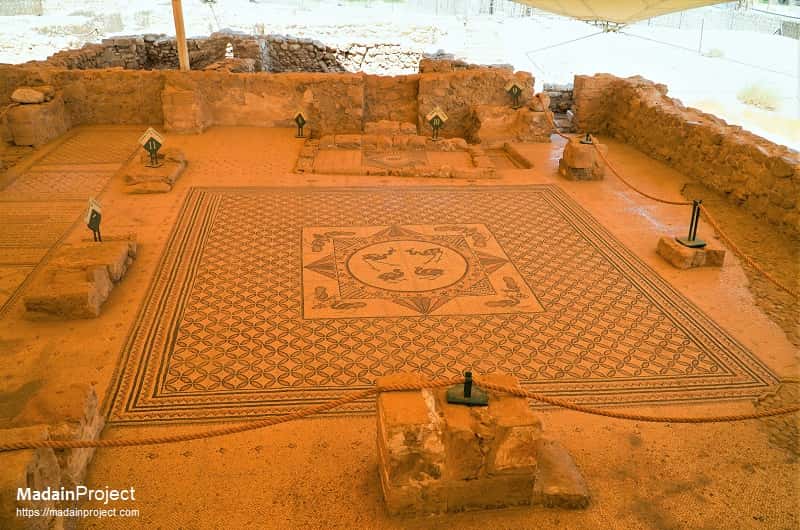
The window behind which I was having the thoughts which begin this post is the uppermost leftermost gable in the building on the left of the neo-classical one, all of this being the Queen’s College, Oxford, and borrowed from their website
I think this story begins in Oxford, although it doesn’t stay there long. At the time I was teaching in Oxford the History syllabus’s foundation was two sets of “papers”, one in British History, covering the sceptred isles of my birth (in theory; in practice, really just England unless someone made special efforts to include the Home Nations) and one in General History (everything beyond Britain). This has now changed, to rebrand General as European and World, and I leave it to you to decide if that’s better. The point is that if you offered a General paper, which I did, the syllabus made almost anything a possible topic or area. The late lamented Mark Whittow, despite being a Byzantinist by training, regularly made his students study T’ang China for a week, because he found it fun and thought it would do them good. That could go the other way round too: I drew a particular intake of breath the first time a student took me up on having included the Mongols in my lists, but it was good for me in the end even if we did spend that week effectively competing for books so that I could mark whatever he wrote.1
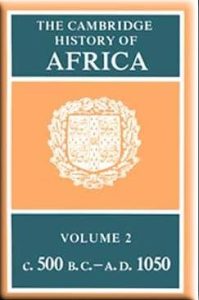
Cover of J. D. Fage (ed.), The Cambridge History of Africa, Volume 2: from c. 500 BC to AD 1050 (Cambridge 1978), DOI 10.1017/CHOL9780521215923
However, I didn’t include South Asia or Africa in what I thought I could teach. I know why I generally stay off South Asia now, which is that I have become aware that there is a dense Indian historiography largely based in or reacting to a particular Indian flavour of Marxism which I’d have to master. Critical historiography and polemic therefore overlap there in such a way that it would take me a long time to get to where I could try and find my own balance without just accidentally repeating one or other side of each dispute. I am getting there, but I’m not yet.2 Then, I suspect it just didn’t occur to me, as it so often seems not to to people. But I did think about including Africa, and that idea fell over pretty much at the point of assembling reading lists. I could find really very little. I asked one of my more learned and globally-minded colleagues, and they said, “Well, there’s the Cambridge History…” Now if I include here a citation for the most relevant volume of that, J. D. Fage (ed.), The Cambridge History of Africa, Volume 2: from c. 500 BC to AD 1050 (Cambridge 1978), you’ll see an obvious problem here, which is: a lot has changed since 1978. You’d hope some of it had changed in African historiography, too. Granted, when I started teaching the British History papers in Oxford in 2010 I was given bibliographies written by the late lamented Patrick Wormald, retired 2001 and sadly dead 2004, so updating was in general slow; but still…

“Why is My Curriculum White” banner
Now, flash forward to the School of History, University of Leeds in 2019, whose views or positions of course are not represented by anything I write here, these being my own views only. But in that school a 2014 campaign called Why is my Curriculum White? had (still has) posters in many of our corridors and had already provoked a certain amount of pressure to respond in some way; and then a man called George Floyd got shot by police in the USA and the world’s media, social and otherwise, took fire for a while with the slogan “Black Lives Matter“.3 This was also the sort of time that what had till then been calling itself Anglo-Saxon studies also got into turmoil over its own alleged racism.4 And I was in charge of an ageing medieval survey module called Medieval and Renaissance Europe that was our incoming students’ first experience of university content teaching. I thought we should probably do something. I couldn’t decentre Europe, because it was in the module title and syllabus, but I tried to make it possible to look at Europe from the outside by adding comparative readings for each topic looking at the same sort of issues in other societies. With one or two topics excepted, none of my colleagues were much better placed to provide those than I was, so I had a lot of searching to do. Somewhere in the course of it, I suspect while looking for an entry-level reading about the Sogdian trading groups of Central Asia in English, I came on a PDF with an obscure file title which turned out to be part of a thing called the UNESCO History of Civilizations of Central Asia, itself part of a project called the Multiple History Series.5 That got me curious and set me looking for other things in that series, and that then led me to discover the existence of the UNESCO General History of Africa.6
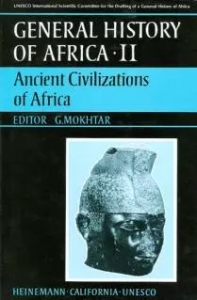
Cover of the second volume of the UNESCO General History of Africa
Now if you’ve never heard of this, you’re not alone; the only other person I’ve found who has, including several historians of Africa I’ve asked about it, is my learned colleague Iona McCleery. And yet it looked like just what we needed and had needed for some time. Firstly, it covered in three volumes what the old Cambridge History covered in two, meaning more detail.7 Secondly, it was marginally more up-to-date, and importantly past the threshold of use of radio-carbon dating as the Cambridge History could not have been. But thirdly and most importantly to someone busily trying to diversify his reading lists so that there was at least some voice in them that wasn’t white and Anglophone, it was all written, or at worst co-written, by scholars from Africa, organised by a huge committee. So I pulled down PDFs of the volumes wherever they could be found (all legit. and above-board, I should say, just not necessarily obvious, as they might have been, say, on the UNESCO website…) and started working them into Zotero so as to be able to find them when relevant.
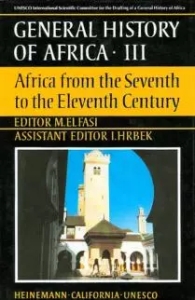
Cover of volume 3 of the UNESCO General History of Africa
Several interesting things became clear out of that. The first, perhaps inevitably, was how the historiography of the continent which this collection set out to detail was broken up by periodizations from elsewhere, but not a consistent elsewhere. The first part of the second volume (which is called Ancient Civilisations of Africa) is more or less Classical in focus, counting Egypt and Rome as part of Africa’s history, albeit with Nubia included in that world; but the second part of it is basically prehistoric archæology, and is where all the sub-Saharan coverage is. That gets us up to the seventh century CE, where the third volume begins, and then suddenly that stuff is fighting with Islamic history for space and loses. Then the fourth volume is basically a history of empires and begins to take on its own shape. In between Classics and Islam the only other periodizers are linguistic and material culture migration. This is, obviously I suppose, led by the evidence; where there is evidence from Greek, Carthaginian and Roman sources, and to an extent Nubian and Aksumite materials, the Classicists handled it; where there’s Arabic-language evidence the Islamicists handled it; and the archæologists did what was left, which is of course really quite a lot, but specifically they had to cover the areas not in contact with external recording civilisations. So the period divide works out disciplinary which works out geographical, and the intersections are quite hard to map.
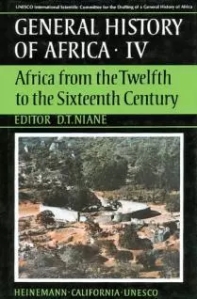
Cover of the fourth volume of the UNESCO General History of Africa
But the other thing that I couldn’t help notice, as I grabbed at headings for tagging purposes, was the concentration of the archæological and linguistic work both on race. And by that I mean, the main research question often seems to have been: what biological category of African can we tell from this evidence moved where when? Who were they ethnically? Everything else, everything visible, was aimed at that question rather than being answers in itself. And perhaps that shouldn’t be surprising; sometimes, the political debates which were driving that scholarship are evident within the chapters.8 But when that work can lead to a 20-page annex reporting on a conference about the “Peopling of Ancient Egypt” that ends with a plea for UNESCO funding to allow better categorisation of ancient African peoples into races, it’s hard to think that this is what I need to make my curriculum less racist.9 It’s not, of course, as if these are specifically African questions: they presumably arrived in Africa directly from nineteenth- and early-twentieth-century European scholarship that was also deeply, disturbingly even, interested in categorising people by “race”, including by language and material culture despite both of those obviously being things people can take or leave. And we still fight with that stuff in Europe; I found a new modern piece trying to do ethnic identification from skull measurement only the other day, in fact (though for what it’s worth, that too was about Egypt and Nubia, as well as being logically pretty much senseless).10 Usually I have to look to French or Croatian scholarship for people still doing this.11 So in a forty-year-plus-old history of Africa it’s probably unreasonable to expect them to have been doing what I was hoping for in 2021; I felt a bit like a hippie gone abroad looking for enlightenment for all the wrong reasons.12 Nonetheless, it left me with the basic quandary: what was I to do, having gone searching for the voices of those missing from the conversation, on finding they weren’t saying what I hoped? Was that actually my problem?
Now, in practical terms this was a very short-lived problem. I ran that module for only one more year, and in the most relevant reading list, which for expertise reasons needed to be focused especially on West Africa and the beginnings of the slave trade, I had room for maybe three or four readings on deeper history, and only one of them could be set as required reading. And as it happened I had already read long ago a pretty good and more recent single-chapter coverage of much of what is outline-known about that area’s development by an African scholar who subsequently did a keynote at the 2021 International Medieval Congress, so I was pretty confident it was OK.13 Meanwhile, I do use one or two chapters from these volumes in other reading lists where relevant, but I do do so gingerly, on the grounds that by now they are probably (indeed, hopefully) an anachronistic representation of African scholarship. It’s just that everyone else I can set is not from Africa… and when some day I have the chance to teach something a bit more like world history, this problem will arise again. Now, it may in fact be solved by the UNESCO General History of Africa, because there is apparently an update volume even now in process which will represent actually-current work on these issues. But I don’t think the particular problems I met with these volumes are why they have apparently been so thoroughly forgotten, or even a reason why they should not have set the world sufficiently alight in the 1980s as to replace the even-then-tiring Cambridge History of Africa. I think that might actually have been our problem, whether the previous one was mine or not…
1. I got him to read David O. Morgan, The Mongols, The Peoples of Europe, 2nd edn, (Oxford 2007), though probably still in the first edition, as well as some articles, and tried to get by myself on Peter Jackson, The Mongols and the West, 1221-1410, The Medieval World, 2nd edn (Abingdon 2018), though likewise in the first edition not that one. It just about worked…
2. For example… it’s hard for someone with my academic persuasions not to like the look of Harbans Mukhia, “Was there feudalism in Indian history?” in Journal of Peasant Studies Vol. 8 (London 1981), pp. 273–310, DOI: 10.1080/03066158108438139; but if you then happen to run across D. N. Jha (ed.), Society and Ideology in India: essays in honour of professor R.S. Sharma (New Delhi 1996), Dilip K. Chakrabarti, Colonial Indology: sociopolitics of the ancient Indian past (New Delhi 1997) or even Sadashiva Ramachandra Gowda, “The feudalism Debate in the point of view of Harbans Mukhia” in Tumbe Group of International Journals Vol. 4 (Tumkur 2021), pp. 26–29, online here, you have to admit that one view won’t be enough…
3. Why is My Curriculum White has been written about in Michael A. Peters, “Why is My Curriculum White?” in Educational Philosophy and Theory Vol. 47 (Abingdon 2015), pp. 641–646, DOI: 10.1080/00131857.2015.1037227 and Michael Adrian Peters, “Why Is My Curriculum White? A Brief Genealogy of Resistance” in Jason Arday and Heidi Safia Mirza (edd.), Dismantling Race in Higher Education: Racism, Whiteness and Decolonising the Academy (Cham 2018), pp. 253–270, DOI: 10.1007/978-3-319-60261-5_14.
4. Mary Rambaran-Olm, “Misnaming the Medieval: Rejecting ‘Anglo-Saxon’ Studies” in History Workshop (4th November 2019), online here; Renato Rodrigues Da Silva, “The Uses of the ‘Anglo-Saxon Past’ between Revolutions, Imperialism and Racism” in Práticas da História: Journal on Theory, Historiography and Uses of the Past No. 12 (Lisboa 2021), pp. 129–160, DOI: 10.48487/pdh.2021.n12.24965; Mary Rambaran-Olm and Erik Wade, “What’s in a Name? The Past and Present Racism in ‘Anglo-Saxon’ Studies” in Yearbook of English Studies Vol. 52 (Cambridge 2022), pp. 135–153, DOI: 10.1353/yes.2022.0010.
5. B. A. Litvinsky, Zhang Guang-da and R. Shabani Samghabadi (edd.), The Crossroads of Civilizations, A.D. 250 to 750, UNESCO History of Civilizations of Central Asia 3 (Paris 1996), on Academia.edu here.
6. The program is discussed by Bethwell A. Ogot, “African Historiography: From colonial historiography to UNESCO’s General history of Africa” in Groniek No. 122 (Groningen 1993), pp. 71–78, online here, and Jan Vansina, “UNESCO and African Historiography” in History in Africa Vol. 20 (Cambridge 1993), pp. 337–352, DOI: 10.2307/3171979.
7. Those volumes being, respectively, G. Mokhtar (ed.), Ancient Civilizations of Africa, UNESCO General History of Africa 2 (London 1981), online here; M. El Fasi with I. Hrbek (edd.), Africa from the Seventh to the Eleventh Century, UNESCO General History of Africa 3 (London 1988), online here; and D. T. Niane (ed.), Africa from the Twelfth to the Sixteenth Century, UNESCO General History of Africa 4 (London 1984), online here.
8. Clearest in Cheikh Anta Diop, “Origin of the ancient Egyptians” in Mokhtar, Ancient Civilizations, pp. 27–82 at pp. 27-40, which all deal with whether the ancient Egyptians counted as black or not. The author concludes that it has been shown that they were but the editor of the volume felt he had to contradict this in a following note, p. 51 & n. 74. Of course the debate is still a very live one: the relevant Wikipedia page is relatively polite, overall, but still has 341 notes…
10. Diop, “Origin of the ancient Egyptians”, pp. 59-78, inc. this on p. 77:
It is desirable… that an international inquiry be organized by UNESCO, either by consulting universities in a sufficient number of countries, or by consulting individual experts of international repute, or alternatively by convening a symposium, with a view to establishing very precise standards on the strictest possible scientific principles for defining races and for identifying the racial type of exhumed skeletons.
In case that sounds unlikely to have been entertained, it should be pointed out that UNESCO had already paid for the conference.
11. Stuart Tyson Smith and Michelle R. Buzon, “Cross-Frontier Interactions in Roman Europe, AD 100‒350: the graphic model applied” in Ulrike Matthies Green and Kirk E. Costion (eds), Modeling Cross-Cultural Interaction in Ancient Borderlands (Gainesville FL 2018), pp. 89-113, on JSTOR here. Their criterion for telling Egyptian from Nubian skulls is, would you believe it, variation; “Egyptian” ones vary little from some typological average and “Nubian” ones vary lots. By this logic, basically Nubians are weird Egyptians, and any Nubian in the right range would be Egyptian. And this got published.
12. Mario Šlaus, Zeljko Tomicić, Ante Uglesić and Radomir Jurić, “Craniometric relationships among medieval Central European populations: implications for Croat migration and expansion” in Croatian Medical Journal Vol. 45 (Zagreb 2004), pp. 434–444, on ResearchGate here. For France, see references in Bonnie Effros, Merovingian Mortuary Archaeology and the Making of the Early Middle Ages, The Transformation of the Classical Heritage 35 (Berkeley CA 2003), pp. 141-154, not doing it herself, I should make clear, but critiquing those who are, with gender deduced from skulls additionally in her sights over pp. 161-162.
13. Not least because decolonising our curriculum is arguably missing the biggest point of all anyway, made forcefully by Eve Tuck and K. Wayne Yang, “Decolonization is not a metaphor” in Decolonization: Indigeneity, Education & Society Vol. 1 (Toronto 2012), pp. 1–40, online here and very important reading.
14. Innocent Pikirayi, “Gold, Black Ivory, and Houses of Stone: historical archaeology in Africa” in Martin Hall and Stephen W. Silliman (edd.), historical archaeology, Blackwell Studies in Global Archaeology 9 (Malden MA 2006), pp. 230–250.
53.867795
-1.912358


